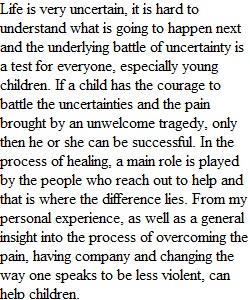


Q Rhetorical Analysis Assignment rhetorical analysis.pptx Actions Our second essay will build on the questions and ideas from our Narrative Essay to pinpoint arguments and analyze potential sources for the final essay of the semester, the Researched Narrative. In the Narrative Essay, you wrote about your lived experience, but none of us live in a vacuum. While lived experience can serve as anecdotal evidence in an argumentative essay, it should not be the only evidence. In other words, now you're looking to see what other writers have to say about the ideas you explored in your Narrative Essay. For this essay, we will develop a research topic and questions based on your Narrative Essay, then we will find and analyze sources in service of your argument. Due Dates (all drafts due by the start of class on the due date, except the final which is due by 10:00 am on November 3) Use this worksheet to help write source entries: RA worksheet.docx Actions Source Entry #1: Friday, October 16 Source Entry #2: Tuesday, October 20 Source Entry #3: Friday, October 23 Use this to assemble the Rough Draft: Rhetorical Analysis Guide.docx Actions Rough Draft: Friday, October 30 before class starts Final Draft: Friday, November 6 by midnight Requirements • A clear and significant argument driven by a central claim (thesis statement). • Analysis of three outside sources that support your argument. These sources may be academic in nature or not. They may include one of our course readings. They need not all be written; you may wish to use documentary film or podcasts. Try to avoid sources that only define terms and provide facts-- in other words, no Wikipedia. • Each source analysis should include examination of: o the author's use of rhetorical devices like pathos, ethos, and logos o the effects of tone, prose style, and mode of communication o the types of bias (as outlined in "The Great Refusal") that the source exhibits • Clear, well-edited writing that is largely free of proofreading errors and errors of grammar, mechanics, and syntax. • Use MLA formatting--12pt. font, double-spaced, 1” margins—as well as MLA in-text citations, and a Works Cited page. (Times New Roman is standard, but some folks find it easier to work with sans-serif fonts like Arial or Calibri and that’s fine by me. I tend to use Garamond because I really like serif fonts and that’s the serif font that’s most accessible for everyone.) • Length (Final Draft) 1000 word minimum PreviousNext
View Related Questions